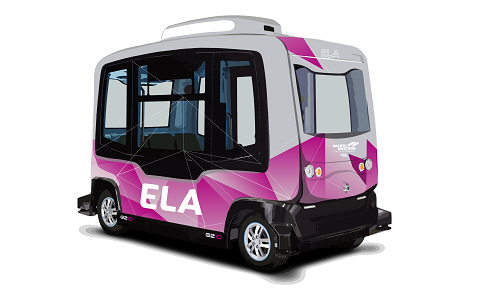By CRM staff
Toronto, Ontario – May 16, 2019 – In this week’s autonomous vehicle report, Ottawa has officially opened their autonomous vehicle testing track, self-driving shuttles have hit the roads in Canada, and Tesla is facing the heat, plus much more.
Ottawa’s Track
Ottawa has officially opened up its autonomous vehicle testing track–the first of its kind in North America. This facility will test the vehicles through various road and weather conditions. Equipped with a range of communication networks including 4G, 5G, short-range communications, and Wi-Fi, it also contains a simulation of traffic light intersections.
Curious Cop
A self-driving shuttle was dropping off passengers for the first time at Providence’s Olneyville Square until it was pulled over by police in Rhode Island. It had only been 12 hours since the self-driving shuttle referred to as Little Roady, was launched when it was pulled over. The police admitted that they were curious as to what it was because they had never seen anything like it before. “It looked like an oversized golf-cart,” the officer said.
Canadian First
Speaking of shuttles, for the first time in Canada, a self-driving shuttle was integrated into regular traffic. The electric autonomous shuttle (ELA) took over a kilometre stretch of 50 Street which is the main road in Beaumont, Alberta. The shuttle travels at 15 km/hr and only hits one set of traffic lights on its route but keeping in mind that the route will eventually expand.
Survey Says
When it comes to trusting autonomous vehicles, it seems as though drivers have mixed feelings. But according to a recent survey from the consulting group Capgemini, a majority of consumers have a positive attitude about self-driving cars. The survey went out to more than 5,500 consumers worldwide and 280 automotive executives. It uncovered that when it comes to offering safe and reliable self-driving vehicles, consumers put more of their trust in automakers than startup companies. But it’s not just the safety feature consumers are worried about – it’s also the convenience. Around 63 percent of respondents said they would use it to socialize with friends or family in the vehicle and 45 percent said they would use it to have a snooze in the vehicle.
Tesla Faces the Heat
Tesla is facing some heat after its Autopilot feature has failed again resulting in a fatality. On March 1, a 50-year-old man had turned on the Autopilot feature 10 seconds before the Model 3 sedan crashed into a semi-truck. According to the National Transportation Safety Board the driver’s hands were not detected on the steering wheel for less than eight seconds prior to the crash. The investigation is still on-going and hasn’t found out who is at fault, but critics say that Tesla’s autonomous features could give drivers the idea that they don’t have to pay attention as much to the road, resulting in a collision.
Tesla is also updating its battery software following two fires involving it’s Model S electric vehicles in Shanghai and Hong Kong. Tesla said in a statement on Wednesday, “As we continue our investigation of the root cause, out of an abundance of caution, we are revising charge and thermal management settings on Model S and Model X vehicles via an over-the-air software update that will begin rolling out today, to help further protect the battery and improve battery longevity.” Since 2013, there have been 14 reported instances of Tesla vehicles catching fire.





































